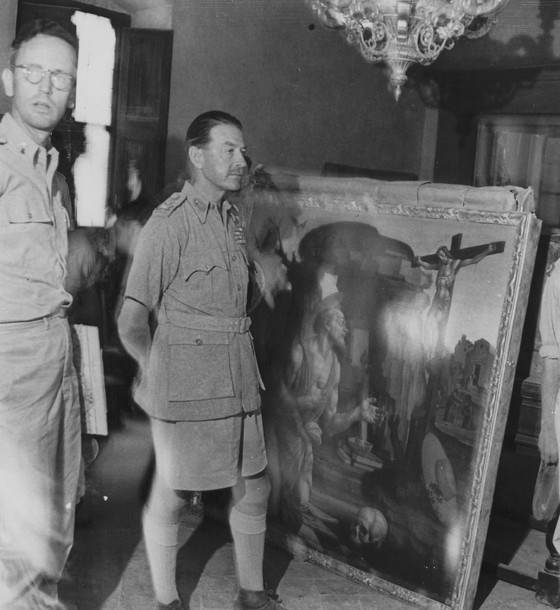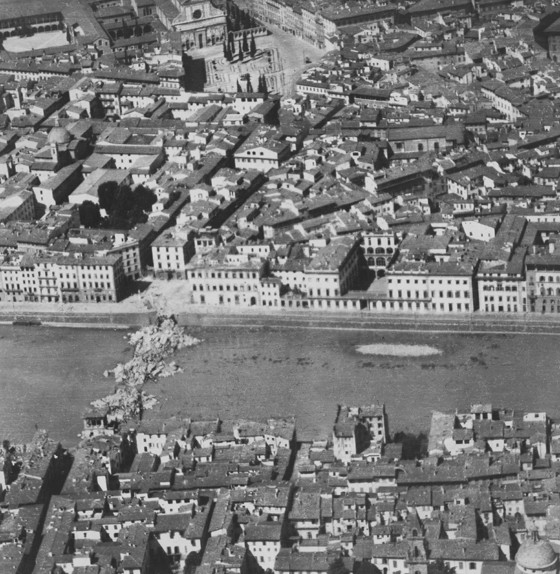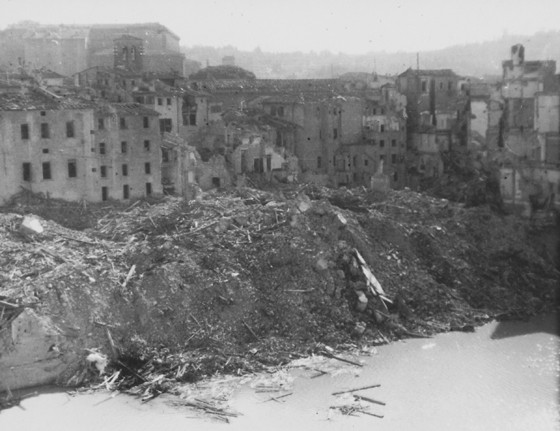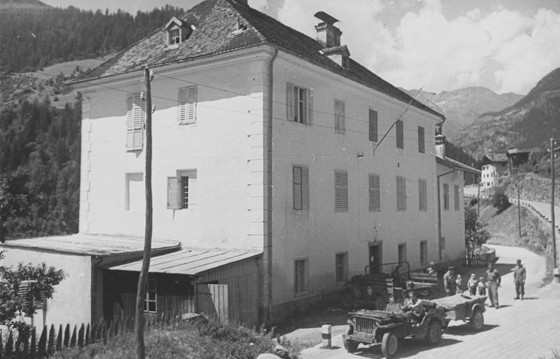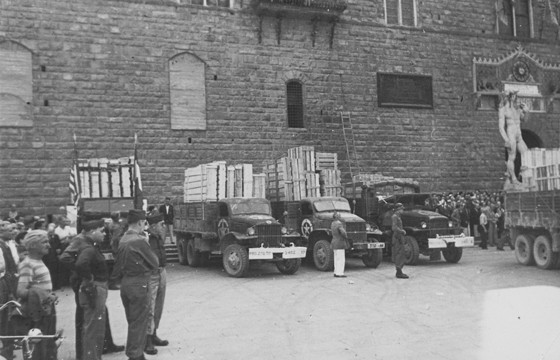The Monuments Men
and the National Gallery of Art
II. Destruction and Recovery in Italy
The Allied invasion of Italy in 1943 became the first test for the monuments program, which began with a single officer in the field. As fighting continued, the Roberts Commission in Washington argued for more men and support for the monuments operation. Over time the number of officers in Italy increased but still remained very small. Lieutenant Frederick Hartt was among the select group of MFAA officers who entered and worked in Tuscany in the wake of the advancing Allied armies. At the end of the war Hartt was honored by the city of Florence for his efforts.
Eighth Army General Alexander inspecting Florentine paintings, British War Office photograph. Frederick Hartt Papers
General Sir Harold Alexander’s well-publicized visit to the Castello di Montegufoni was part of the Allied effort to demonstrate its commitment to preserving Italy’s art and cultural heritage. Germans had stored paintings from Florentine collections at the castello during the war. MFAA officer Frederick Hartt, at left, looks into the camera.
To support troop morale, the army published pamphlets such as this guide, intended “to assist the servicemen in their quest for information concerning the famed places which are being liberated.” Frederick Hartt Papers
Reconnaissance photograph, Florence, Italy, c. 1945. Frederick Hartt Papers
As they retreated from Florence, German troops blew up the city’s historic bridges, including the Ponte alla Carraia, shown here. The famed Ponte Vecchio was left intact, although the ancient buildings at its approaches were reduced to rubble. The MFAA did everything possible to conserve and consolidate damaged structures, but many in Florence were beyond saving.
Destroyed buildings in Florence following the Nazi retreat. Frederick Hartt Papers
San Leonardo in Val Passiria, Italy. Frederick Hartt Papers
In May 1945 large deposits of art from the Uffizi and other Florentine museums were found in the local jail of the northern Italian town of San Leonardo, where they had been moved by the German army. Frederick Hartt arrived at the jail on May 21 and returned often until the paintings were returned to Florence.
Trucks with Florentine art arriving at the Piazza della Signoria, July 22, 1945. Frederick Hartt Papers
The truck convoy with works of art from the jail at San Leonardo in Passiria was greeted by heralds, trumpeters, and jubilant celebrations as it reentered Florence.
Next > III. D-Day and France
